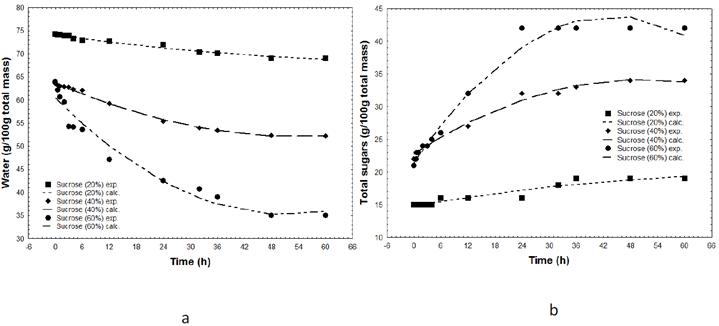ABSTRACT:
Sapodilla is an original fruit from Central America that is well adapted in all regions of the Brazilian territory. Despite its wide adaptation and acceptance in fruit markets, it is rare to find it outside tropical regions, partially because of its high perishability. The development of alternative, simple, and inexpensive methods to extend the conservation and marketing of these fruits is important, and osmotic dehydration is one of these methods. The main objective of this study was to determine the water and sucrose diffusion coefficients during the osmotic dehydration of sapodilla. This process was performed in short duration (up to 6h) to evaluate detailed information on water loss and solids gain kinetics at the beginning of the process and in long duration (up to 60h) to determine the equilibrium concentrations in sapodilla. The immersion time had greater influence on the water and sucrose diffusion coefficients (P<0.05); the maximum water loss (WL) and solute gain (SG) occurred in the osmotic solution at the highest concentration. Water and sucrose diffusion coefficients ranged from 0.00 x 10-10 m2/s to 1.858 x 10-10 m2/s, and from 0.00 x 10-10to 2.304 x 10-10 m2/s, respectively. Thus, understanding the WL and SG kinetics during the process of sapodilla osmotic dehydration could significantly contribute to new alternatives of preservation and commercialization of this fruit.
Key words:
osmotic dehydration; mass transfer; diffusion coefficient; sapodilla

 Thumbnail
Thumbnail
 Thumbnail
Thumbnail

